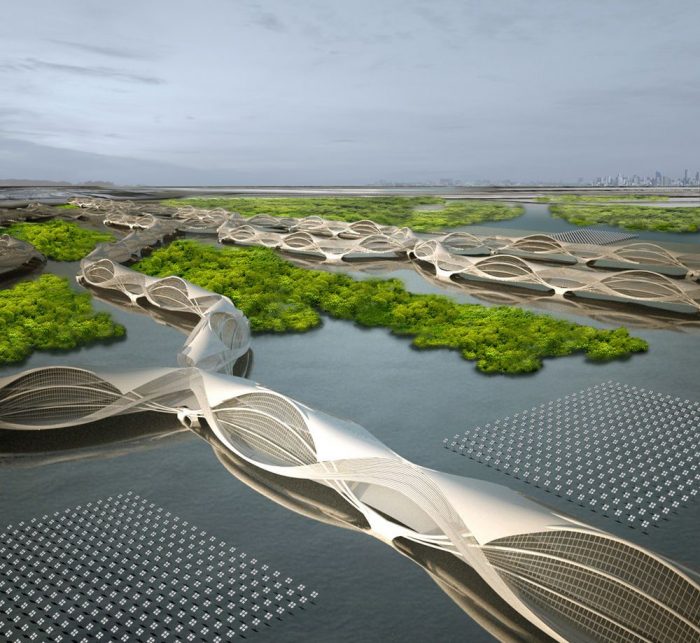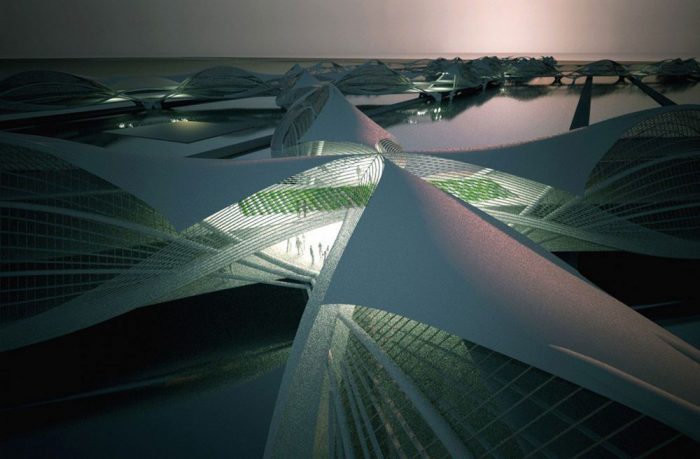According to the head of Thailand’s National Disaster Warning Center, Meteorologist Smith Dharmasaroja, by 2030 much of Bangkok will lie under 1.5 meters (5 feet) of seawater. With the city sinking 10 cm below sea level, the latter rising by 40 cm annually, the safest place to create architecture is above water. Thus, a Bangkok-based architecture firm S+PBA recently unveiled drawings for a self-sustaining community that can thrive with the ebb and flow of rising tides. Dubbed “A Post Diluvian Future”, the “wetropolis” allows Bangkok to live with natural flooding instead of resisting it while creating a homeostasis that detoxifies the region’s polluted waters.
The project examines the entirely supra-marine stilt home community of Koh Pan Yii, a settlement that floats on the Andaman sea in Southern Thailand, successfully sustaining all of the typical functions of an urban community—schools, public spaces, hospitals, utilities, industry. Wetropolis is a possible response to the problem of the rising sea levels and the rapid sinking of the capital city of Bangkok, S+PBA will present its more recent project A Post Diluvian Future, a prototype community that takes its inspiration from Thailand’s centuries old traditions of flood conscious aquatecture and turn it into a contemporary sustainable and visually stunning Wetropolis.
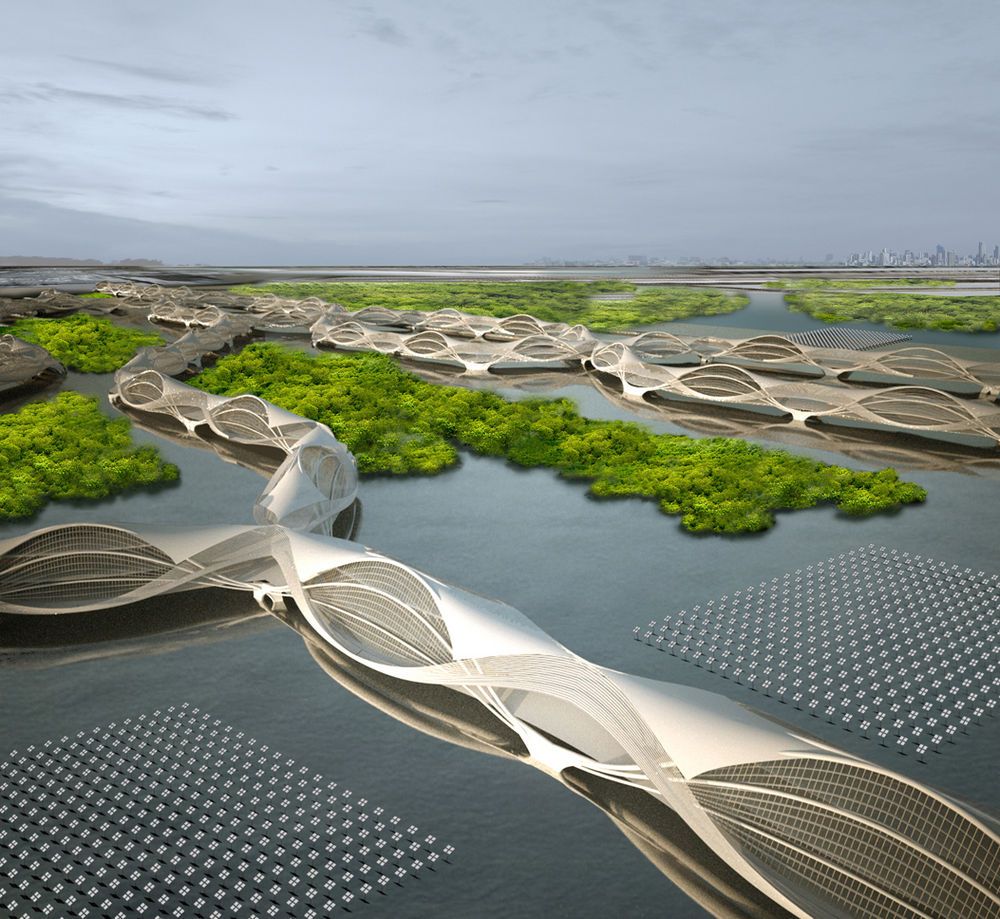
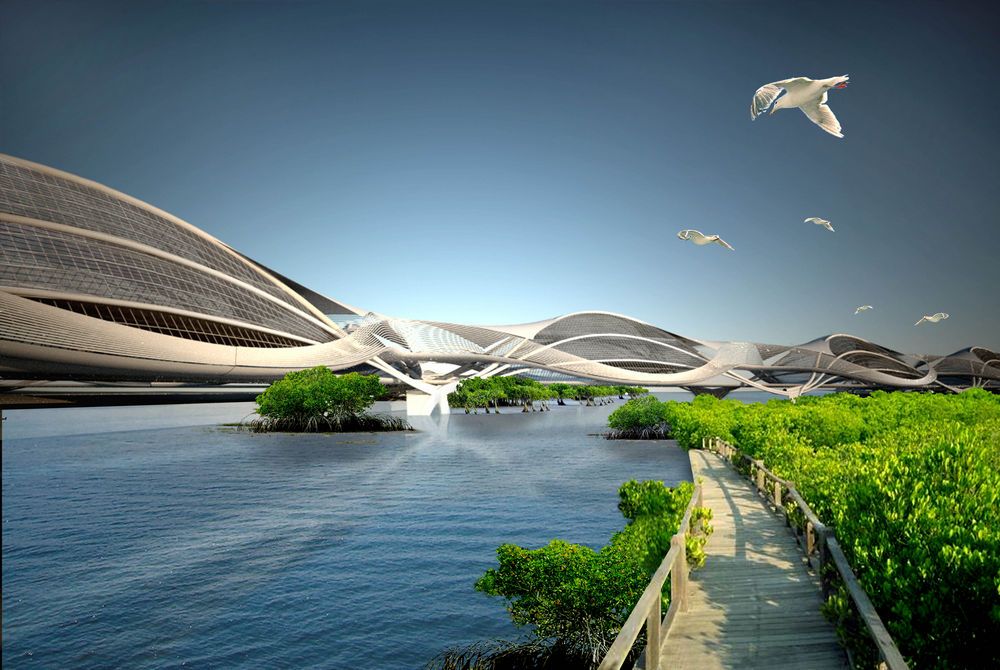
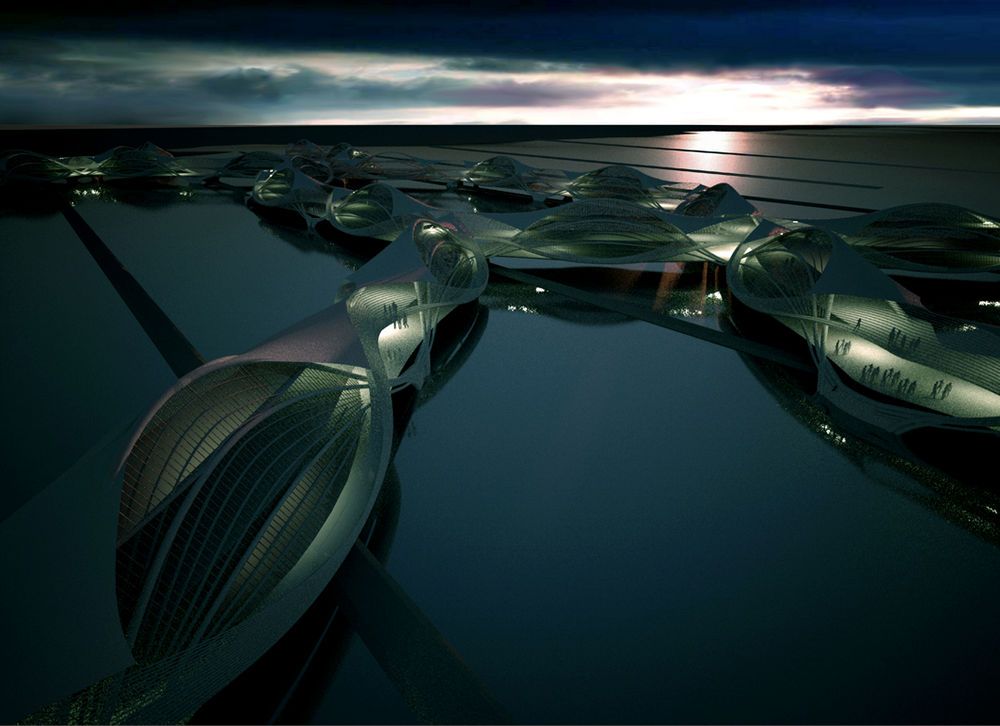
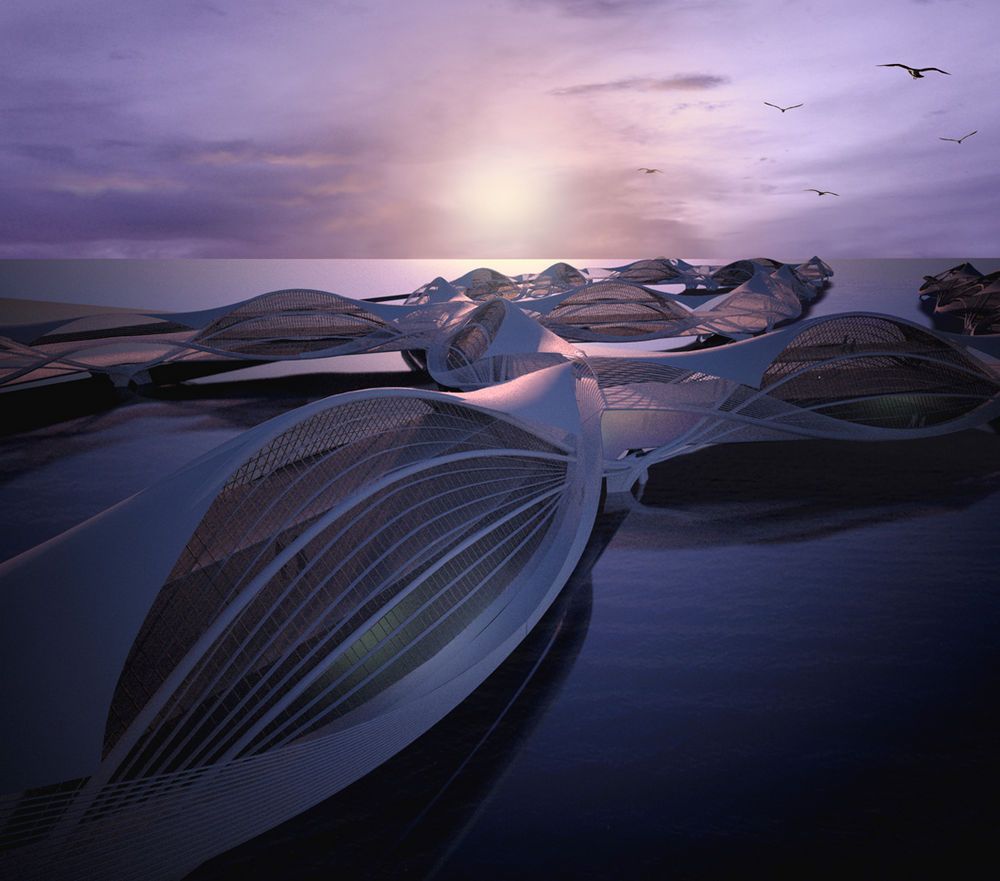
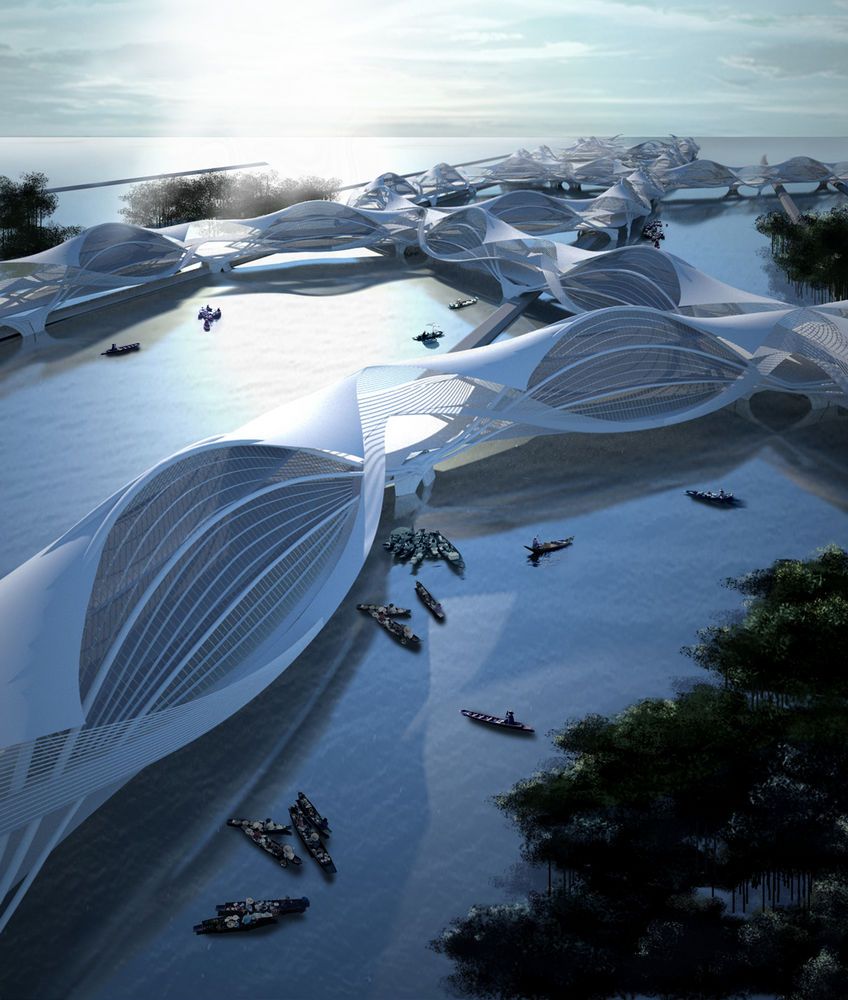
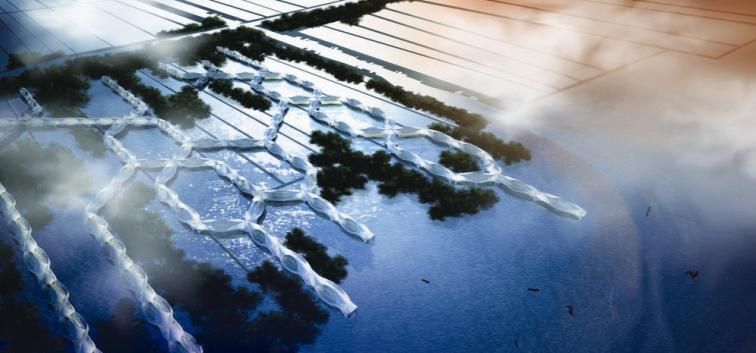
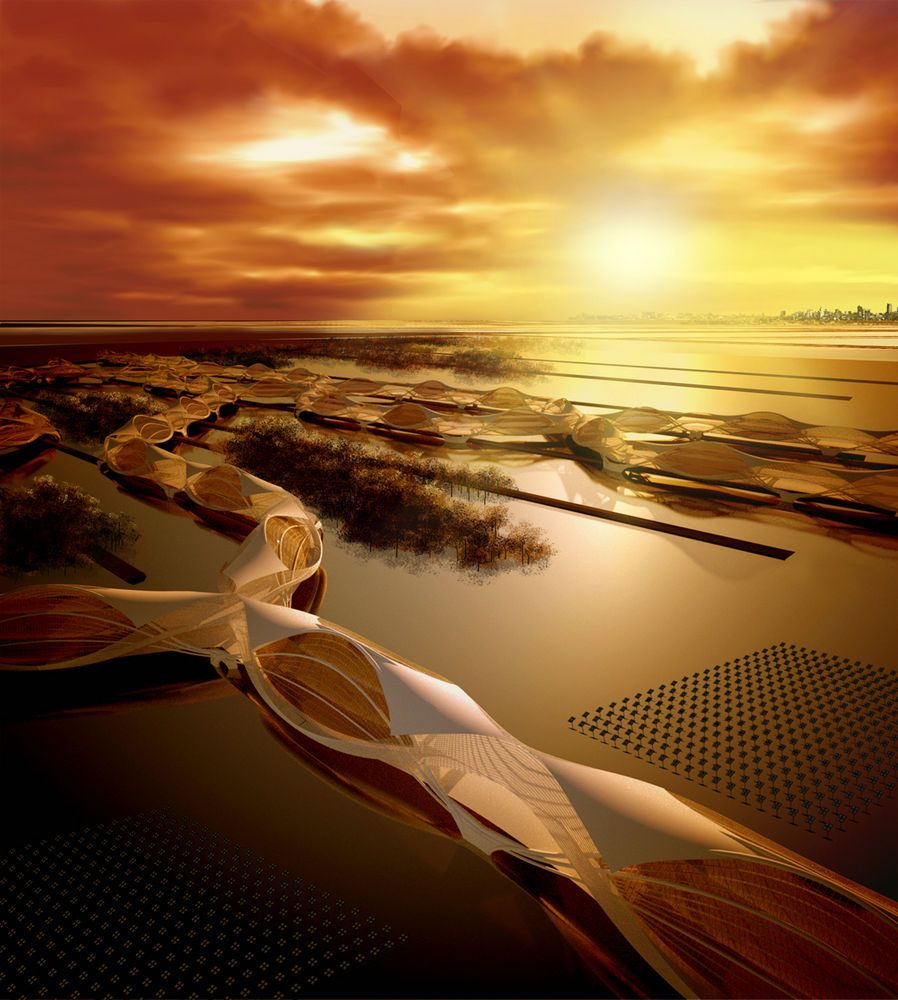
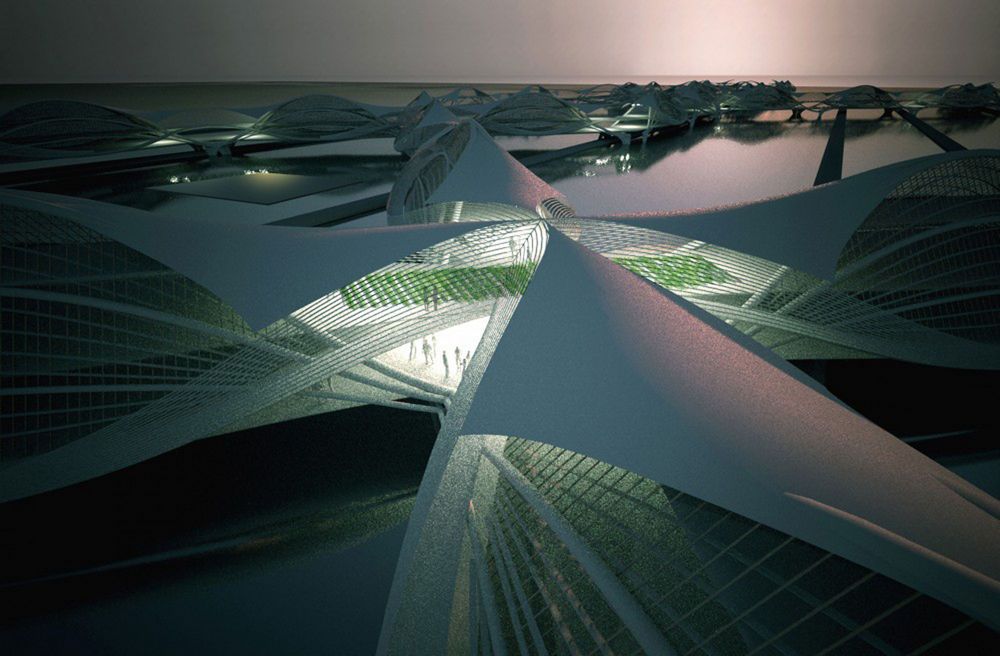
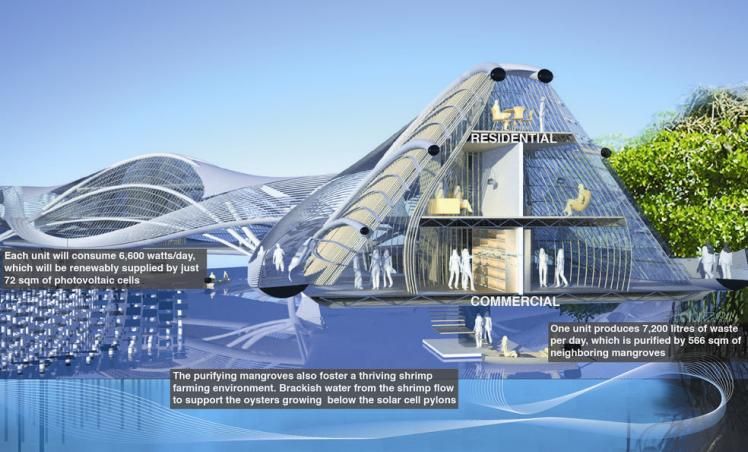
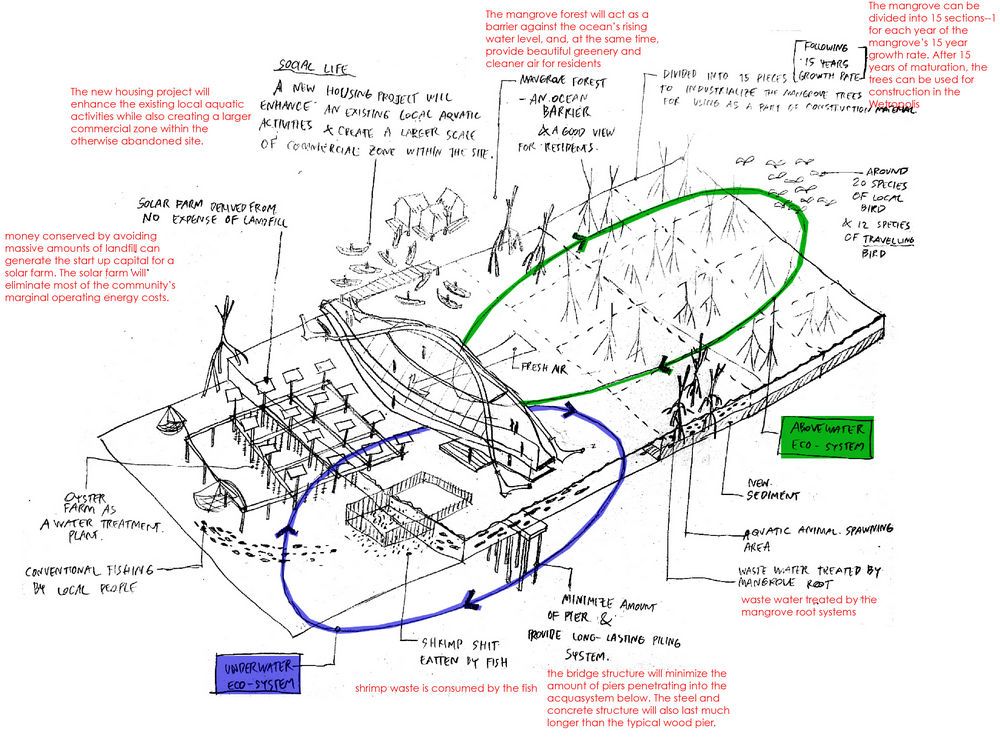
Courtesy of S+PBA


